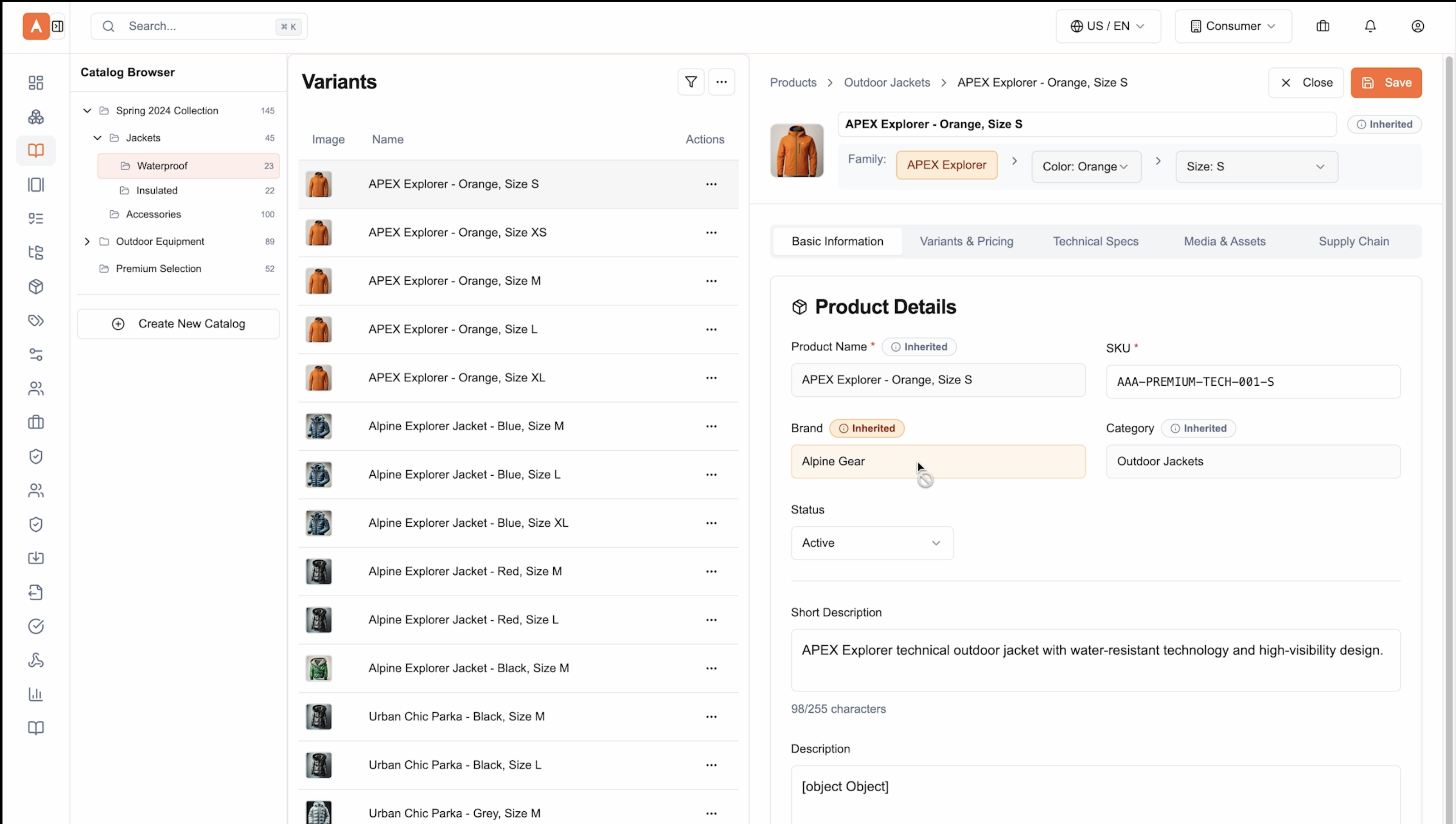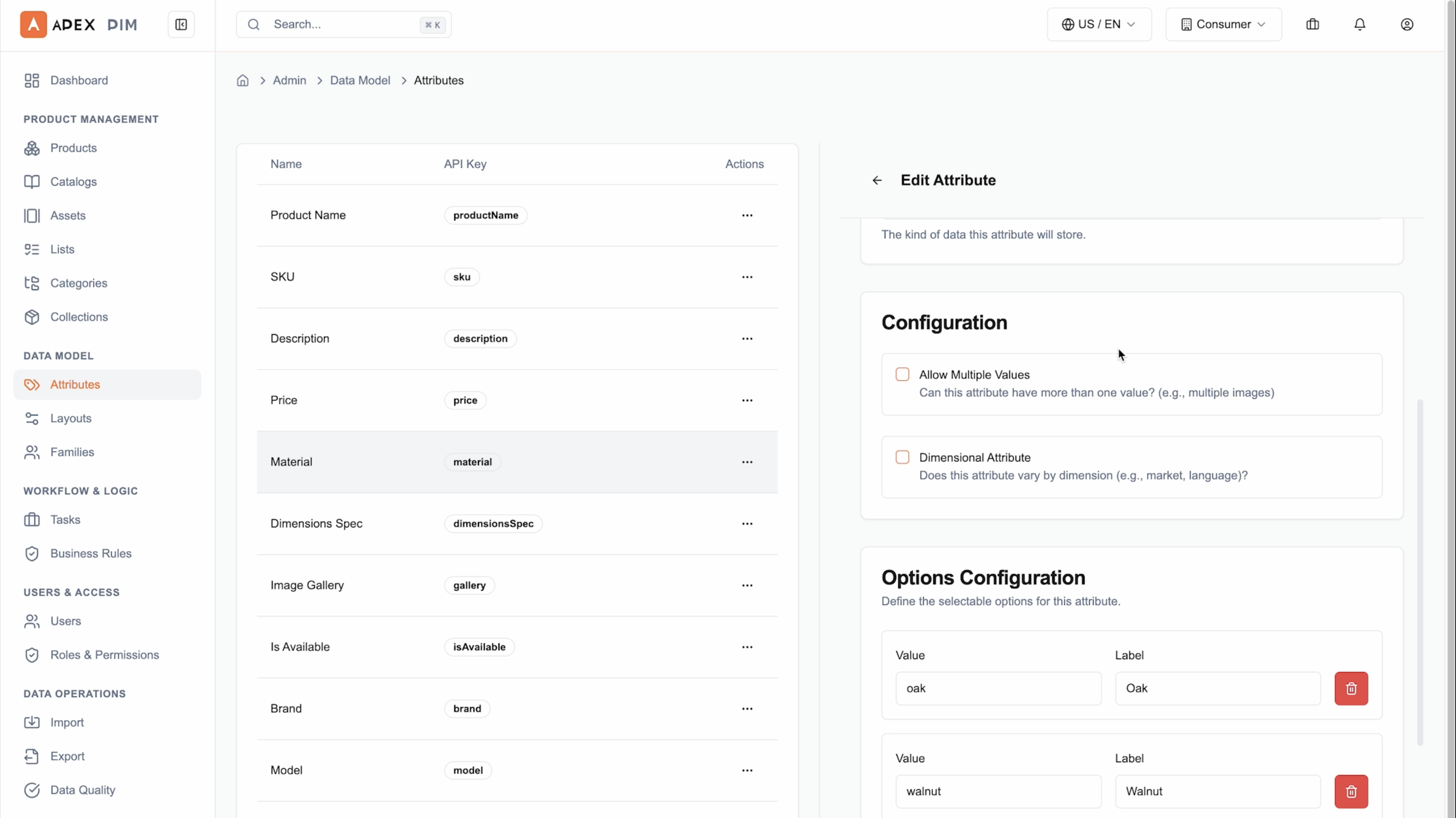AI-Generated PIM System Demo
Watch how I built a fully functional PIM system using AI
The Challenge
After years of implementing PIM systems, I noticed a pattern: every platform excels in certain areas while falling short in others. Some have brilliant user interfaces but lack API flexibility. Others offer powerful data models but require months of configuration.
This sparked a question: What if we could combine the best features of all PIM systems into a single, AI-generated solution?
The Process: From Research to Reality
Phase 1: Deep Market Analysis
I spent weeks analyzing multiple PIM platforms—from open-source solutions to enterprise giants. For each system, I documented:
- Data models and attribute structures
- API architectures and integration patterns
- User interface design patterns
- Common pain points and limitations
Phase 2: Building the AI Knowledge Base
This research became a comprehensive knowledge base designed for AI agents. It included technical documentation, functional requirements, and UX patterns—essentially creating a "PIM expert brain" for the AI to leverage.
Phase 3: AI-Powered Development
Using Claude and V0, I generated a functional PIM system. What typically takes months of development emerged in hours. The AI didn't just write code—it made architectural decisions based on the aggregated best practices from the industry.

AI-Generated PIM Interface
The main PIM interface showing product management capabilities and modern UI design patterns synthesized from multiple platforms
The Result: A Functional PIM Prototype
The generated system is a sophisticated prototype with production-ready potential. It demonstrates:
- Advanced Product Management: Complex hierarchies with inheritance from product families to SKUs
- Flexible Attribute System: Support for text, numbers, money, dimensions, and complex data types
- Integrated DAM: Seamless digital asset management within the PIM environment
- Smart Data Inheritance: Automatic attribute inheritance with variant-specific overrides
- Modern Tech Stack: Next.js, TypeScript, PostgreSQL, and cloud-native architecture
What impressed me most wasn't just the features—it was how the AI synthesized patterns from different systems into something cohesive and elegant. While it's a prototype, the path to production deployment is straightforward.

Advanced Attribute Management
The sophisticated attribute system supporting complex data types, inheritance patterns, and flexible product modeling - synthesized from best practices across multiple PIM platforms

Integrated Digital Asset Management
Seamless DAM integration within the PIM environment, demonstrating how AI combined asset management patterns from leading platforms into a unified experience
Key Insights
Domain Knowledge is Everything
The quality of the AI output directly correlated with the depth of domain knowledge provided. Without comprehensive PIM expertise in the knowledge base, this would have been impossible.
Beyond Code Generation
The AI didn't just write code—it made design decisions, chose appropriate patterns, and created a coherent architecture. It understood the why behind PIM features, not just the how.
Speed Changes Everything
Being able to prototype a complete PIM in hours instead of months fundamentally changes how we approach software development. It enables experimentation and iteration at a pace previously unimaginable.
What This Means for the Industry
For Businesses: You can now validate PIM requirements with a working system before committing to a vendor. The barrier to entry for custom solutions has dramatically lowered.
For Vendors: The competitive advantage shifts from basic features to specialized capabilities, integrations, and support. Generic PIM functionality becomes commoditized.
For Developers: The role evolves from writing boilerplate code to architecting solutions and providing domain expertise. Deep industry knowledge becomes more valuable than ever.
The Future is Already Here
This experiment proved that AI can generate enterprise-grade business applications when provided with proper domain knowledge. We're entering an era where the gap between idea and implementation is shrinking rapidly.
The question isn't whether AI will transform software development—it's how quickly businesses will adapt to this new reality. Those who combine deep domain expertise with AI capabilities will have an unprecedented advantage.
Want to see the system in action? Watch the video above for a complete walkthrough of the AI-generated PIM system.